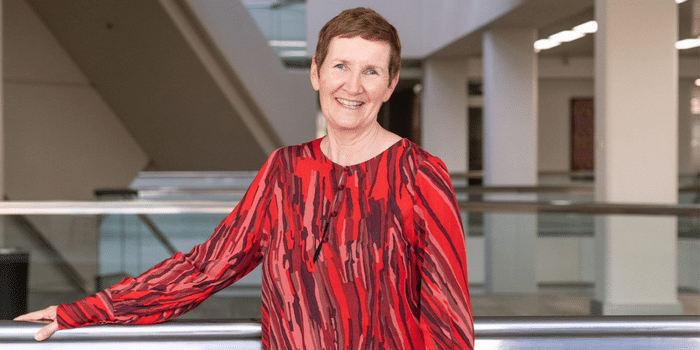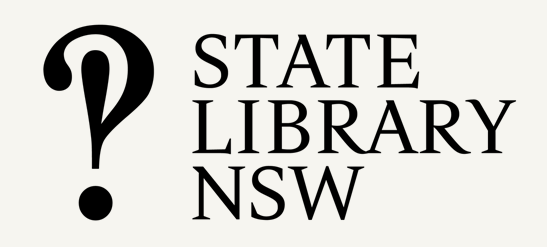Some might say Catherine Clark has come full circle, returning to the library where she did her placement as a university student when she took on the role of CEO and State Librarian at the State Library of Western Australia earlier this year. We asked Catherine about making the move from the tertiary sector to SLWA, and where she sees the library in 5 years’ time.
Tell us briefly about your career path.
The majority of my career has been in academic libraries but the early part of my career was in public libraries and I also worked in a special library in the UK for a while. My practicum placement when I was studying my librarian qualification was actually at the State Library of WA, so perhaps it is fate that I have returned.
What attracted you to work at the State Library of Western Australia?
I was the ALIA representative on the Library Board for a few years and so knew about the wonderful work of the library, as well as the collections. However, I have to say that I am even more impressed now that I am in the role – the commitment to service by the staff; and the collections from across our broad and diverse community are incredible, plus we serve one third of Australia’s land mass (can’t help including my parochial WA facts!) so that adds another layer of challenge and opportunity.
Where do you see your library in five years?
There are so many ideas and possibilities that it’s hard to limit the list but I hope to spend my time in the role empowering and supporting the State Library team to:
- Shape our collections, both current and historical, to authentically represent and respond to our community in both acquisition and description. NSLA members have a particular responsibility for Indigenous people given the nature of the material that we hold. I’m looking forward to the opportunity this provides to be led by, and to partner with Indigenous people, Australia’s first storytellers.
- Provide engaging experiences that demonstrate different points of view and interpretation, as well as enabling ways to seamlessly access our unique materials. I’m conscious that our collections are owned by the community and we have a responsibility to make as much as possible available. Curated and non-curated options should all be explored so this work involves many elements including digitisation and systems, as well as creative programming.
- Partner, learn and support public libraries in Western Australia that are in over 230 places and that provide a connection with the community in a way that other cultural institutions don’t. We will also focus on provision of service to communities that don’t have public libraries – access to digital content provides opportunities to do this which haven’t always been available but we need to ensure that resources are promoted and access is supported.
- Identify where we can provide the best support for early literacy as well as digital and other literacies. The library’s longstanding and highly successful Better Beginnings Program has demonstrated the importance of making books available to all children and there is much more work for us to do here, as well as in the development of digital literacy for community members who don’t otherwise have the opportunity to develop the skills required to access crucial services online.
Having worked in both tertiary and state libraries, what similarities and differences have you noticed between the two?
I’ll start by noting that there are lots of similarities – the business of libraries in collecting and making accessible content for their communities is at the heart of both academic and state libraries. However, the types of collections and the communities are different. Tertiary collections are primarily published content, with some notable exceptions for special collections e.g. in my previous role as University Librarian at Curtin University, I was also the Director of the John Curtin Prime Ministerial Library and that collection included WWII Prime Minister John Curtin’s pocket watch! At the State Library, we have large volumes of photographs, personal papers and ephemera. This connection to people’s personal triumphs and disappointments in the unpublished collections is a legacy that I’m conscious we need to uphold so that future generations of people in our state can understand how we lived. We recently acquired a beautiful personal diary that was written by a WWI Western Australian soldier who had been at both Gallipoli and the Somme. I reflect that our role is to preserve this beautiful connection to the past but also to acquire today’s equivalent.
The communities are different too, and particularly in comparison to my previous workplace at Curtin University which has two Western Australian and four international campuses. State libraries serve the communities in their state, with their associated broad and diverse needs. However, although the communities are different, the need to consult, listen and learn is the same.
There are other differences in governance, with state libraries being standalone organisations with associated responsibilities in budgeting, health and safety, etc and, in my case, reporting to a board. I’m definitely still learning my way and have really appreciated the expertise of my colleagues in helping me through the various policies and processes. I can say that state government bureaucracy is no worse than universities!
Fortunately, librarians like to network and learn from each other so I’m still in contact with many of my former colleagues from academic libraries and, at the end of the day, there are more similarities than differences.
What is your favourite item in the collection?
Surely this is like asking ‘who is your favourite child’?! I don’t know all of the collections yet and expect that I never will but it’s certainly one of the joys of the role to learn about old and new items. We have two recent acquisitions that I’m very fond of – the first is a map which was designed and engraved by the Nuremberg cartographer Philip Eckebrecht in the mid-17th Century. It’s significant for a number of reasons, including showing the West Australian coastline, one of the earliest known maps to do so.
The second collection that I will highlight is a newly acquired set of band posters from Perth band venues in the 1980s. Many of the band names are familiar to me, as are the venues. They range from hand-scrawled writing through to beautifully screen printed and graphic designed posters. This is part of our rich collection of materials related to Western Australian music.










